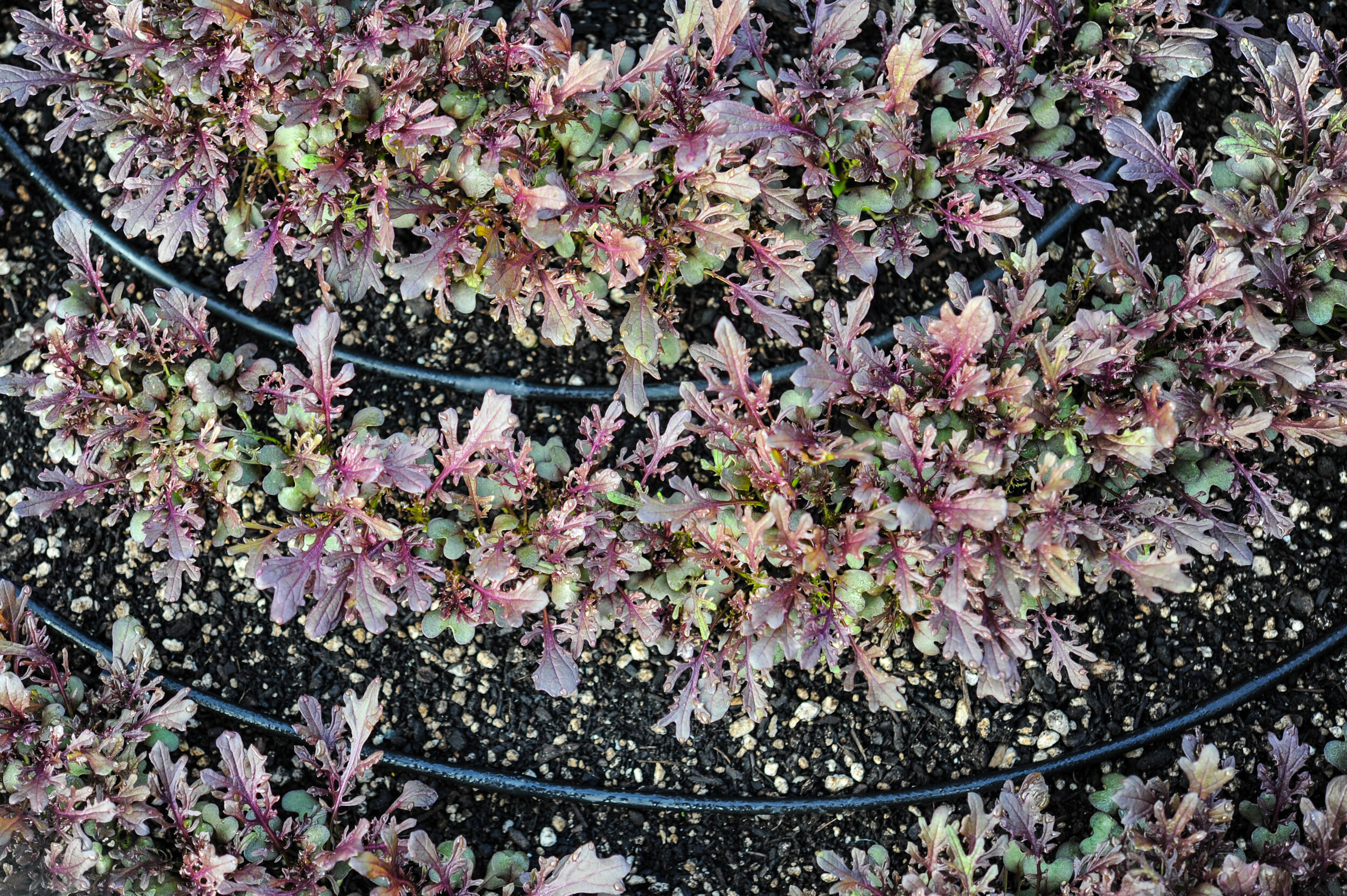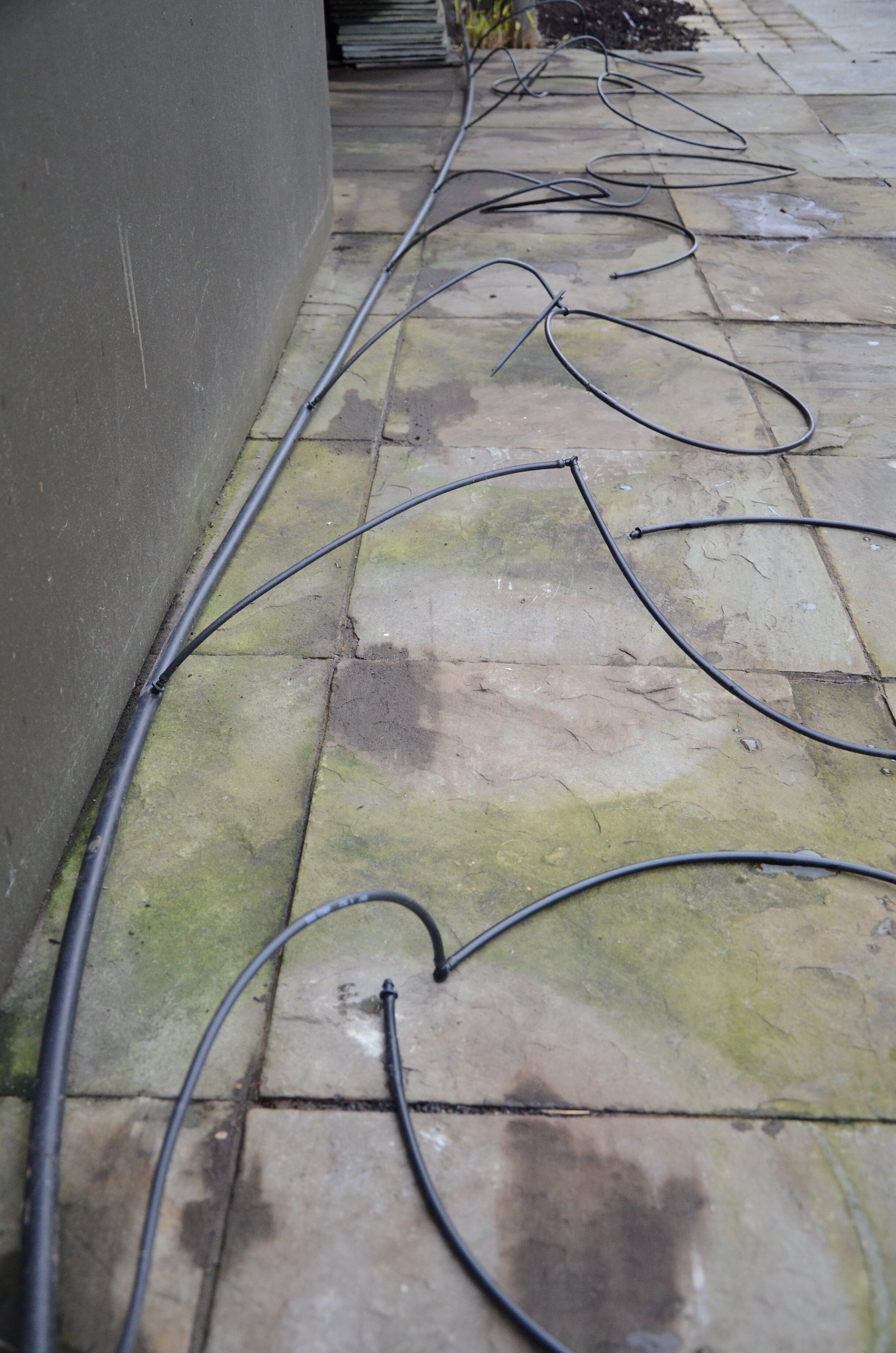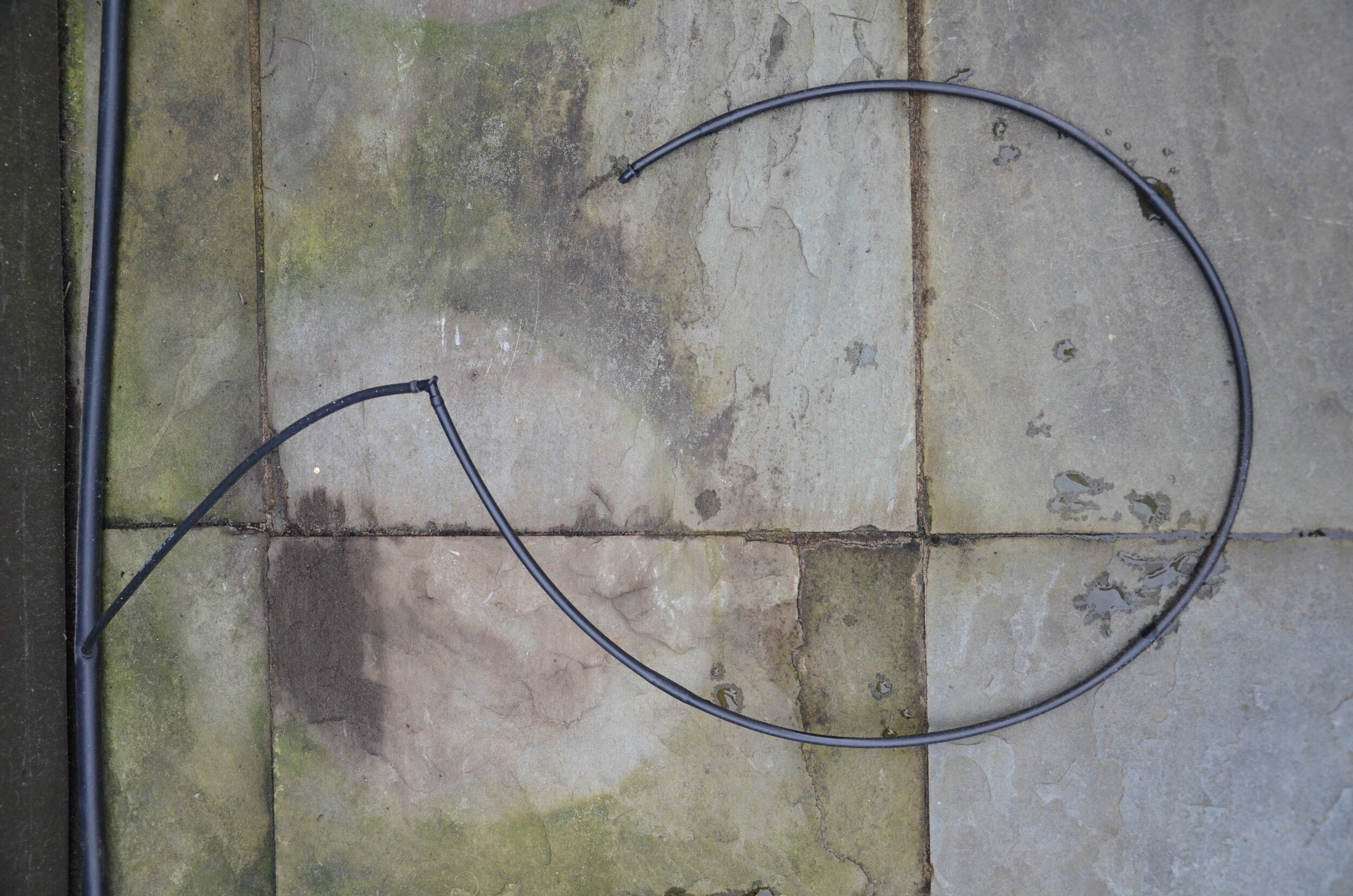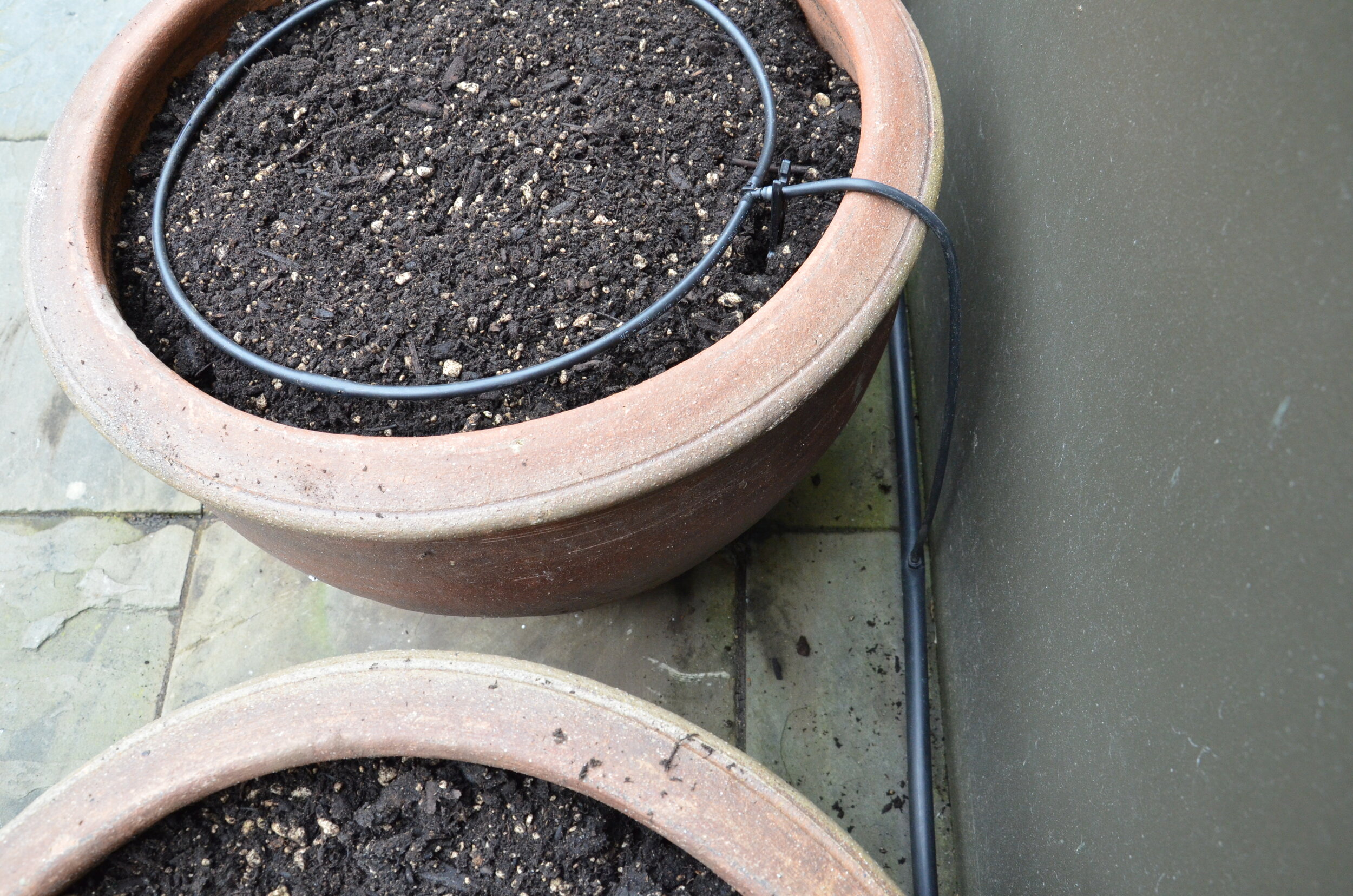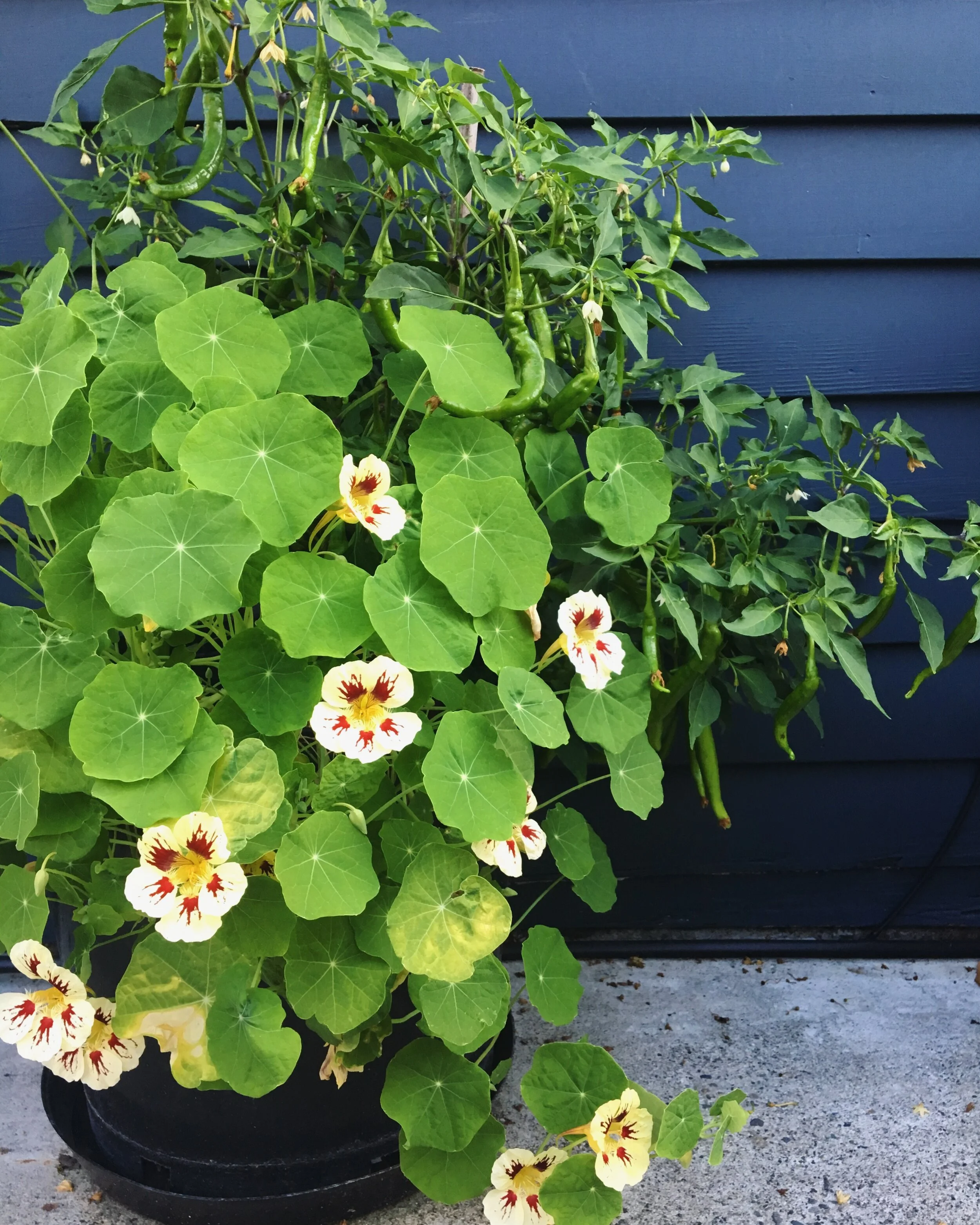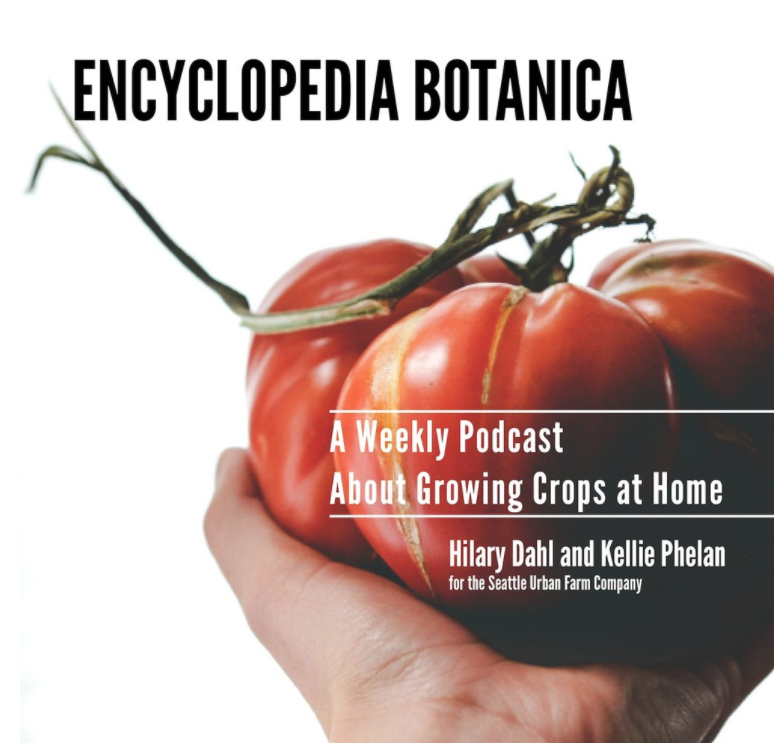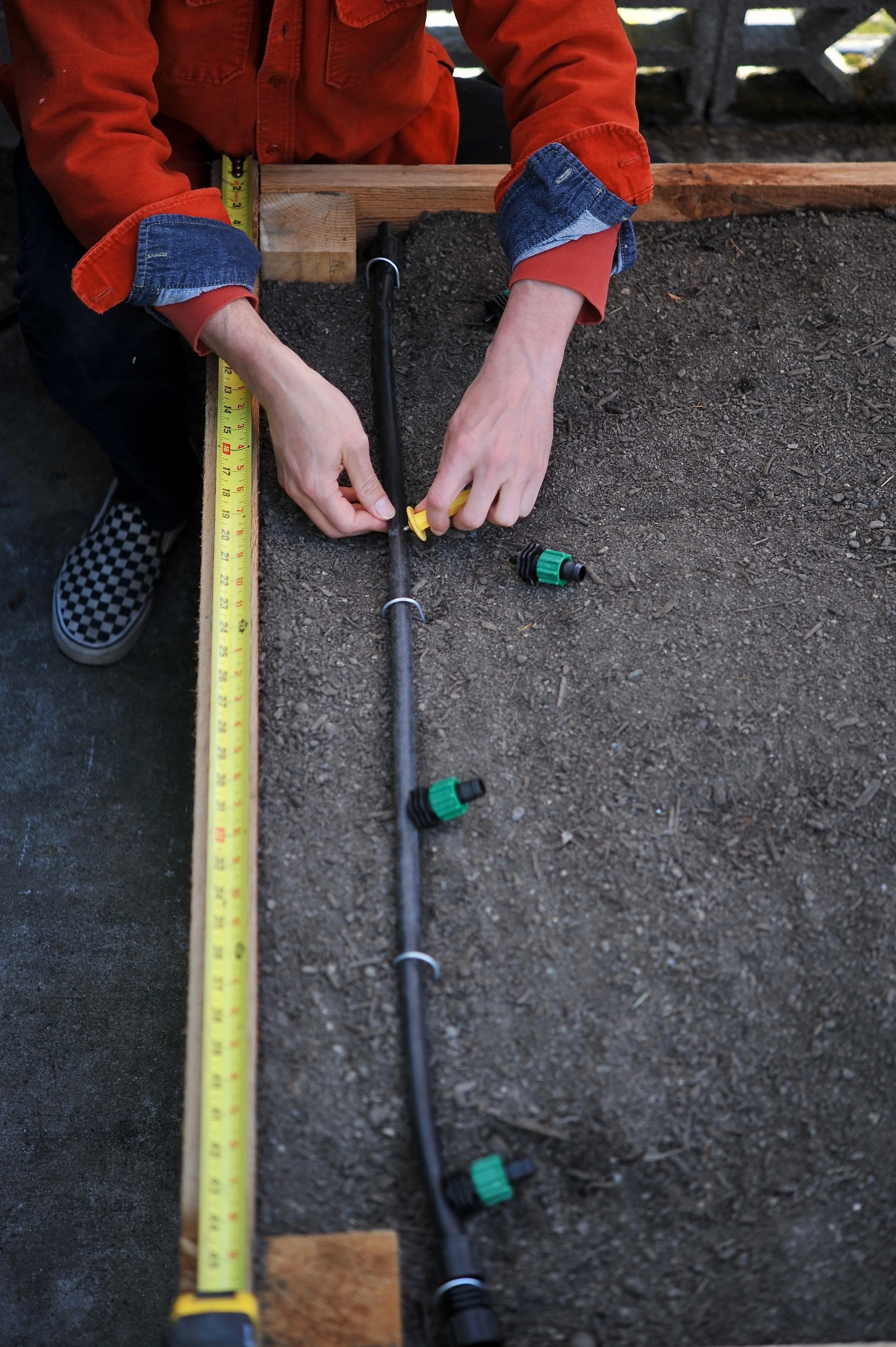As I mentioned in my last post, automated irrigation for container gardening is crucial. Containers need to be watered frequently (up to three times per day in hot, dry weather) and that much hand watering can be hard to keep up with, especially if you plan to go out of town. Smaller containers require more frequent watering because there is a limited amount of soil and that soil can hold only so much water at a time. Also, in small containers, more of the soil surface area is exposed to the sun so the water evaporates quickly.
The good news is that setting up irrigation on an automatic timer can actually be really simple! If you have a number of pots clustered close together, then the best option is to set up a drip irrigation system. The framework of the system is the same as for any garden (see Drip Irrigation Q+A); the only difference is the drip lines themselves. Here’s a simple way to set up a drip system for containers, using 1⁄4 in. emitter tubing:
Run a 1⁄2 in. main line from your hose end timer, brining the main line as close as possible to your containers.
At each container, punch a hole in the main line and attach solid 1⁄4 in. line (often called microtubing- it doesn’t have emitters!). Run this up to the lip of the pot.
Attach an elbow fitting at the lip of the pot.
Attach 1⁄4 in. tubing with emitters spaced at 6 in. to the elbow, and circle it around the container. For 1⁄4 in. tubing with 8 in. or 12 in. spacing, or if you’re working with containers with a surface area that’s larger than 18” across, add a few extra coils. The goal is to never have your crops further than 6 inches away from a drip line. If you plant to grow direct seeded crops, coil the tubing in your containers so that the tubing is spaced 6 inches apart (see header image), this will help you maximize your growing space and improve germination.
Seal the end of the hose with a plug, and hold the line in place with a stake.
You’re done!
Here are a few not-so-gorgeous, but hopefully helpful images of this process:
To water your containers, start by running the system until water just starts to seep from the bottom of the containers. Note how long this takes (probably between 5 and 15 minutes): That will be your watering duration.
Now set the timer to run twice a day. If you have the option of scheduling when it will run, try setting it at around 6:00 am and 2:00 pm. With larger containers (10 or more gallons), watering twice a day may be sufficient, but if you have smaller containers and are experiencing very hot, dry weather, consider watering as often as three times per day. When you are getting started, make sure to check the moisture in the soil with your finger each day and adjust the system as necessary.
An alternative option:
I do feel really strongly about the benefits of installing a drip irrigation system and think it is by far the most efficient and effective way to water your garden, no matter the size (more on this in Drip Irrigation Q+A). With that said, the goal is to get you growing food at home and if you’re feeling like setting up a drip system is beyond the scope of work you’re willing or ready to take on right now, setting up an oscillating sprinkler on an automatic hose bib timer (We use these ones from DIG pretty much exclusively) is the next best thing.
When using a sprinkler, you will want to water in the morning, as early as possible. This allows the water to soak thoroughly into the soil, and the leaves of the plants to dry off, before the hottest part of the day. Watering at midday is less efficient, since you will lose more water to evaporation. And watering in the evening can promote disease in the garden, since the water sits on the leaves of your crops throughout the night.
An oscillating sprinkler is a good choice for a beginning gardener, and the type most people are likely to have on hand at home already. They’re the type that sprays out water in a fan-shaped curtain with a metal that arm oscillates back and forth to cover a rectangular area. You can usually lock the oscillating arm in place so it only sprays in one direction, and depending on the orientation of your containers, you may want to do this to focus the water stream on your plants and reduce water waste.
If you don’t already have one, oscillating sprinklers are inexpensive, and with some adjustment you can get them to water over the top of tall crops later in the season. You can vary the watering area by turning your water pressure up or down at the hose bib, and by adjusting how far the sprinkler head moves back and forth.
To set up an oscillating sprinkler on an automatic timer, you’ll need:
An oscillating sprinkler
A hose
A hose end timer
You may also want a y-valve for your hose bib, so that you can leave your timer on one side of the valve while keeping the second available for use.
To set up:
Connect timer to the hose bib (with batteries)
Connect the hose to the timer
Connect the sprinkler to the end of the hose
Place your sprinkler near your containers and run the water to see where it’s landing. Adjust until you find the most efficient configuration. You might weigh the sprinkler down with rocks or bricks so you’re less likely to accidentally move it.
The following are products we recommend using to get his project done! As long as your containers are within 50 feet of your water source, the irrigation kit from Dripworks should have everything you need to set up drip irrigation in around 18-20 containers, depending on the size/shape/height of each container. If you don’t need that much, in my opinion, it’s still a better deal to buy the kit and have extra then to piece it all together. The link here doesn’t list every piece included, but I’ve verified with Dripworks that it includes micro-tubing and all of the necessary connection pieces.
As always, you can find more information on everything discussed in this post in our books, Food Grown Right, In Your Backyard and High-Yield Vegetable Gardening.

